The development of literacy in early childhood and into primary school serves as one of the most crucial foundations for a child’s life.
Being able to read, write, speak and listen gives a child invaluable social skills and confidence to become healthy and happy into adulthood.
Literacy development in early years can significantly impact a child’s career and personal happiness, through to becoming a balanced adult with all the necessary skills to cope with daily life.
And a child’s introduction to literacy begins immediately through parental communication which helps the toddler develop visual and auditory learning skills.
It’s this formative learning that provides the basic building blocks of literacy development that continues and is enhanced in primary school.
In this article we’ll be outlining…
- What’s involved in literacy development and education
- What Teachers need to know to teach effectively
- Important assessments and tests
- Evidence-based programs that build literacy skills
Let’s get into it…
What is literacy development?
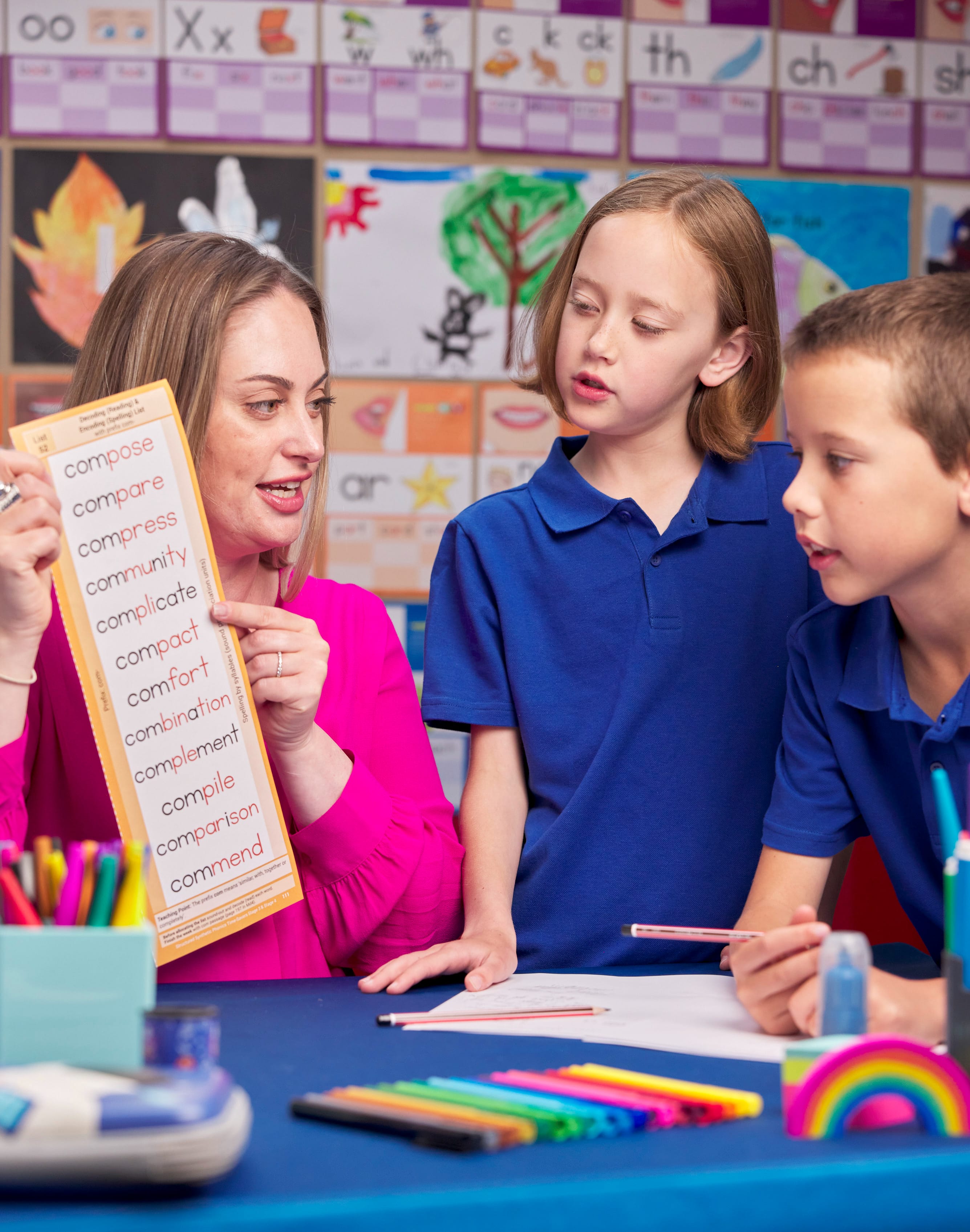
Literacy development is the process of learning to read as well as writing, communicating and socialising.
The importance of literacy development in early childhood is the responsibility of parents and teachers alike…
As the saying goes: “it takes a village to raise a child”.
Research has shown there are six main components of early literacy development, also known as the Big Six:
- Oral language
- Phonological awareness
- Phonics
- Vocabulary
- Fluency
- Comprehension
Teaching language and literacy in the early years involves learning about sounds, words and language through repetition.
It is important to support early literacy development by communicating with children and reading.
This will have an impact later down the line and can affect school work, making friends, problem-solving, making decisions and developing independence.
Early language and literacy development plays a major role in adult life too, a good start can lead to a better basis when learning more complex skills like managing money and work.
Lacking vital literacy skills will have a negative impact at every stage of a person’s life.
As a child they won’t be able to do well at school.
Later as a young adult they will struggle to find employment, and as a parent they won’t be able to teach their own children early literacy and language development.
This continued cycle makes social mobility almost impossible, making it easy to see the importance of literacy in economic development.
CHILDHOOD LEARNING
What does language literacy and early childhood education involve?

In order to encourage literacy development in children there needs to be a focus on oral language, phonological awareness, phonics, vocabulary, fluency and comprehension.
The emergent literacy approach notes that in literate society young children, even one and two year olds, are in the process of becoming literate.
An emergent literacy assessment can be taken to check on a child’s progress.
Educators can use assessments to understand learning and development levels and to guide instructional decisions.
Assessments can also help educators to identify children who might benefit from receiving additional intervention services.
Educators use assessment data to evaluate program practices and processes for areas of continued improvement and professional growth.
Children develop and learn best through everyday, fun activities like singing, talking and early literacy games.
This can be broken down into describing pictures and objects, the sound and shape of letters and words as well as what letters are called and the various sounds of letters.
It’s important for a literacy learner to recognise words that begin and end with the same letters, words that can be broken up into parts (syllables), as well as words that can be formed by blending different sounds and rhymes.
These seemingly simple activities hone powerful brain connections developing language, semantics, thinking and understanding.
Without activities like talking, singing and reading, a child’s brain development will lack these important connections.
What are some language and literacy development activities for toddlers?
There are several day to day activities that can have a huge impact in early childhood literacy development if repeated throughout these early years.
Toddlers can gain early literacy skills simply from repetition.
By copying the noises they make, and repeating them using the correct pronunciation, a beginner learns how language is put together.
Another method is to answer questions with another question, making them think about the answer before it is handed to them.
Songs are an essential part of first steps in oral language for children as they are easily repeatable and have an interesting tone and rhythm to follow.
The same can be said for oral language and literacy like stories and books.
By following along or pointing to the words, a child can learn information from a different source than their parents or home life and widen their literacy development in the early years.
Emphasising syllables in early language and literacy can help a child to understand that words can be broken down into easy to copy sounds.
For example, saying “Toh-Mah-Toe” instead of tomato can help to break down sounds into syllables to make it easier to pronounce. As well as using rhyming games to emphasise word by word sounds.
Toddlers can be guided through an emerging literacy and language assessment by parents to check on their progress.
What’s important for Australian Teachers to know about language and literacy development in early childhood?
Early literacy research indicates that without an evidence-based systematic and structured literacy program, children will not develop competency in reading and writing.
Children without early literacy support need a systematic approach to learn oral language skills in these foundation years.
Aged-specific educational materials can help teachers to achieve this.
The key concepts of developing literacy in early years are known as the “Big Six”. as mentioned above.
Oral language – The basis of all literacy skills. Children learn these skills by communicating with others and developing a rich bank of vocabulary.
Phonological awareness – The recognition and manipulation of phonemes; the ability to hear the sounds that letters make and then manipulate those sounds.
Phonics – The process of connecting the sounds learned through phonemic awareness to the written letters of the language.
Vocabulary – Children understand and use a large variety of words.
Fluency – Practised by reading aloud, fluency refers to the ease with which children read.
Comprehension – Refers to the understanding of texts as well as the ability to predict what will come next.
PLD’s early literacy programs and whole school plan to literacy helps students as they progress through the school from class to class and from year to year.
Children will benefit from the continuity of instruction and get the best start literacy continuum.
What should literacy development in preschool include?
In early literacy, PLD’s programs focus upon literacy skills and strategies such as phonological awareness and the alphabet sounds, as well as fine and gross motor and oral language skill challenges.
It’s important to define literacy in education by using set topics, recognising the different stages of each strategy;
Phonological awareness includes; syllable blending and segmentation, initial sound awareness and blending.
The alphabet sounds used in developing early literacy include; alphabet sound knowledge (lower-case letter focus), alphabet sound recall (for reading), and alphabet formation (for how a word is spelt).
PLD’s Structured Synthetic Phonics (SSP) alphabet letter of presentation order is matched with the letter formation order, promoting literacy development.
In this way, when learning the alphabet sounds, students are simultaneously learning to write alphabetic fluency.
What’s involved in language and literacy development in kindergarten?
The language and literacy skills targeted in kindergarten remain the development of oral language, the development of movement and motor skills and literacy.
In kindergarten the balanced literacy components are;
- Phonic Concepts – Alphabet Sound Recall
- Phonemic Awareness – Blending Onset and Rime
- Three Phonemes and Segmentation
- Letter Formation with a Focus on Starting Points and Verbal Cues
- Oral Language and Object Descriptions (Show and Tell)
Children will get early literacy instruction to decode and encode lists and writing tasks.
They will also conduct oral language and literacy development activities like Activity Retells (Detailing – When? What was made? What was used? What was the first step? What was the second step? What was the final step?), and Picture Book Retelling; Students read out loud books word for word after multiple reading of a focus book read over a fortnight.
What is the Australian literacy continuum?
In Australian Curriculum Literacy, students become literate as they develop the knowledge, skills and dispositions to interpret and use language confidently for learning and communicating in and out of school and for participating effectively in society.
The main aim of the V9 curriculum is to improve Australian literacy levels throughout the varying cultures and economic areas of the country.
The 2006 Adult Literacy and Life Skills Survey (ALLS) measured literacy competence in four areas:
- Prose literacy
- Document literacy
- Numeracy
- Problem solving
The results were ranked on a scale from level 1 to 5.
Level 3 was considered the minimum level of literacy.
“Almost half of all Australians aged 15-74 years had literacy skills below level 3 (46% had prose literacy skills below level 3 and 47% had document literacy skills below this level) and more than half (53%) had numeracy skills below level 3.” abs.gov.au
The continuum also serves to promote literacy professional development in teachers. This requires a whole school approach to literacy improvement in Australia.
These strategies incorporate comprehending texts through listening, development of reading and viewing, and composing texts through speaking, writing and creating.
This includes; text knowledge, grammar knowledge, word knowledge and visual knowledge.
What is the ACARA literacy continuum?
The newly released curriculum sets the expectations for what all young Australians should be taught, regardless of where they live in Australia or their background.
Teaching cultural literacy in the classroom should be paramount, regardless of family literacy resources.
“ACARA, or the Australian Curriculum, Assessment and Reporting Authority, draws on the best national talent and expertise, and consults widely to develop the Australian Curriculum and resources.” australiancurriculum.edu.au.
The ACARA literacy and numeracy continuum notes that developing language and literacy involves students interacting with texts in different ways including reading material incorporating letters and numbers, viewing and listening.
The Australian literacy foundation involves creating texts through speaking or writing. Texts can include print, digital and visual.
It also notes the ability to use and modify language for various purposes in different contexts.
For example, creating a slide presentation for a science project, a composition for English, or reading questions on a Mathematics test.
LITERACY STAGES
What are the various learning stages of development in children?
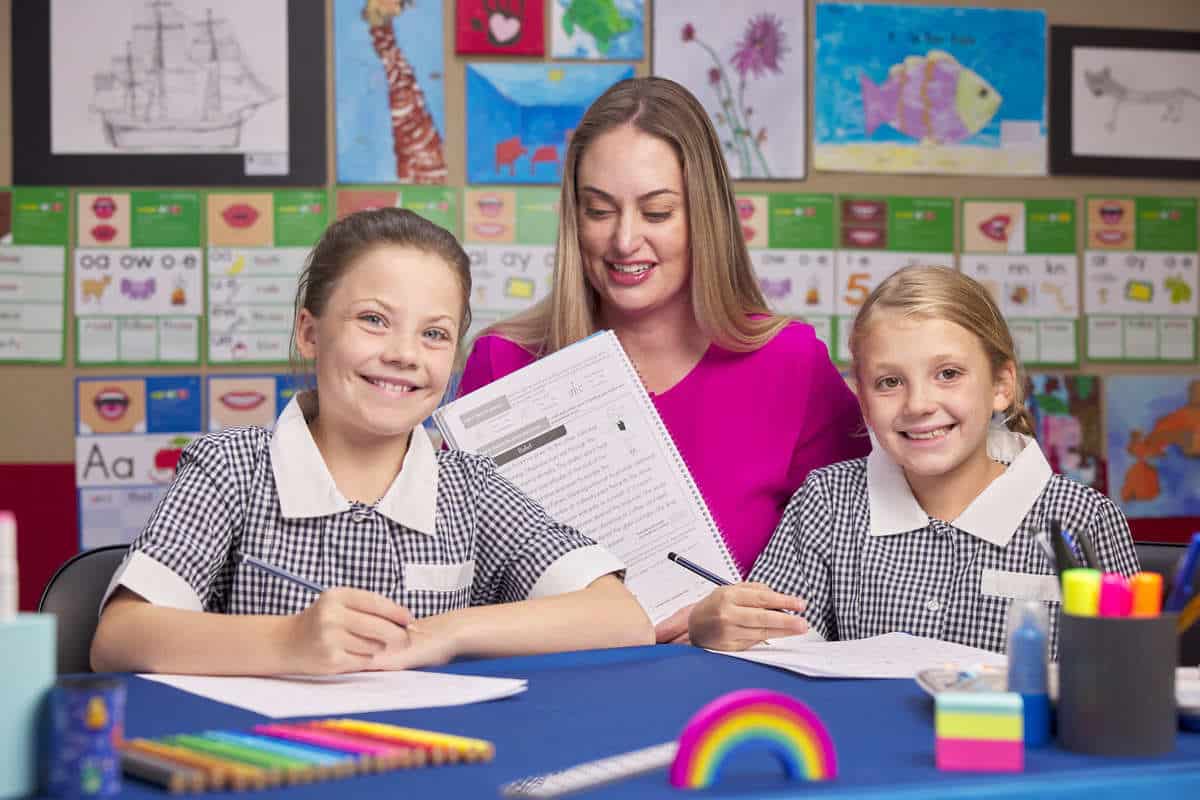
The stages of literacy development in children can be split into five stages. The five stages of literacy development are;
- Awareness and Exploration Stage: Babies and Toddlers
Infants hear words, rhymes, songs and stories. As the infant becomes a toddler, they are beginning to show emergent literacy behaviours like associating the proper words with the objects.
2. Experimental Reading and Writing Stage: Preschool Age
Children are learning the ABCs as well as signs and symbols. They are recognising and memorising important words like their own name, their parent’s names and their home address.
Early years literacy games can be played to build on knowledge and create patterns of behaviour.
- Early Learning Reading and Writing Stage: Kindergarten to First Grade
Children move forward and learn to write phonetically in this age group. Instead of spelling the word correctly, children will write out what they hear when they say the word, developing visual literacy.
- Transitional Reading and Writing Stage: Second and Third Grade
Reading comprehension levels improve (intermediate reading), they are developing literacy skills and children will be able to understand the meaning of a statement and can put together several ideas to form the whole picture.
- Competent Reading and Writing Stage: Fourth Grade and Beyond
Children will understand the message in their reading (advanced reading), use self-correction and need no assistance to comprehend stories and learn new examples of literacy in everyday life.
What is the EYFS literacy? (Early Years Foundational Stage)
The early years foundation stage (EYFS) covers fundamental literacy and sets standards for the learning, development and care of a child from birth to 5 years old.
Also called the emergent literacy perspective.
Children will mostly be taught through games and play in emergent literacy development.
The areas of EYFS literacy learning are:
- communication and language
- physical development
- personal, social and emotional development
- basic literacy skills
- mathematics
- understanding the world
- expressive arts and design
A child that struggles at this foundational stage will need special care and attention in the early years to gain the confidence to build strong literacy skills.
It is an educator’s responsibility to provide encouragement for independent learning and growth through cognitive development.
What is the importance of rhyme in literacy development?
Rhyme was once thought to be a fundamental part of teaching literacy in early childhood education.
The sound of a word, decoded through repetition within song and rhyme, and similar words were thought to help the child to memorise them and group them together.
However, research has recently shown that literacy skills in early childhood do not correlate to rhyming ability.
Phillips et al (2008) suggested that when compared with “phonological awareness instruction focused on alternative tasks and activities, children exposed to rhyming interventions made less progress”.
In order to improve the linguistic and literacy skills of students, it is now recommended to teach phonological awareness through word, syllable, onset-rime and phoneme level tasks, rather than more traditional rhyming activities.
Rhyme is no longer considered one of the foundations of literacy development teaching.
How does storytelling promote literacy development?
Storytelling is essential in teaching language and literacy in early childhood education because it helps children to relate and engage with words.
Storytelling can also help children to learn to understand each other’s differences.
Children can listen to stories about other people and learn to empathise with those who live in different environments.
It can also be a great tool for bilingual children’s language and literacy development when there are few people in their environment that speak another language.
By reading, children can connect their own experiences to the ones they are learning about. And are then able to create their own stories.
Storytelling can support literacy development by encouraging children to tell their own stories orally, in writing, and in pictures.
THEORIES
What are some well-known literacy development theories?
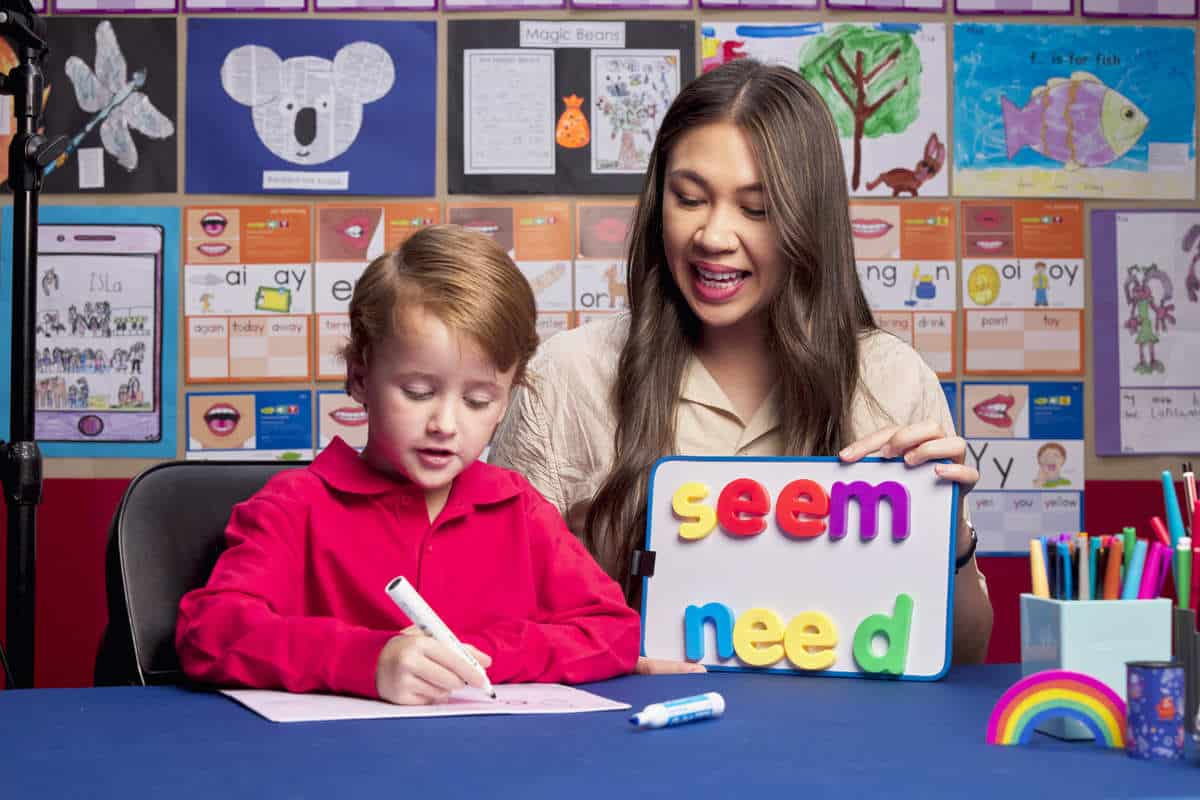
There are three early literacy theories of language development;
Behaviourist Theory
Whereby actions are shaped by responses to other individuals, so that behaviours that are reinforced become more frequent, and behaviours that are punished become inhibited.The Nativist Theory
States that children are “prewired” for language, and that language is a process of normal human development. Advocated by Chomsky (1965) also referred to as the innate hypothesis.The Interactionist Theory
There is an interaction between the child’s innate language abilities and the child’s environment in order for language development and reasoning to occur.
The theories of literacy development put forward by Vygotsky (1962) and Piaget (1955) saw language and cognition as related components that occur during different literacy stages of reading development: sensorimotor, preoperational, concrete operational, and formal operational.
The Science of Reading is an important model in early reading research.
It says that reading comprehension (RC) is the product of decoding (D) and language comprehension (LC), or RC = D x LC.
The best literacy programs, like PLD, provide an evidence-based approach to Structured Synthetic Phonics (SSP) for primary school educators, promoting literacy in early years.
PLD’s SSP approach extends from the junior primary years through to upper primary years and thereby facilitates a whole school strategy to literacy and development.
ASSESSMENTS AND TESTS
What are some foundational literacy and language development tests and assessments?
Some early literacy skills assessments can be found in PLDs Screening and Tracking Manuals.
The manuals demonstrate step-by-step instructions including what and when to screen, the resources required, time allocations and discontinue rules.
It is recommended that a basic literacy test is administered following a solid period of repeated targeted instruction as outlined in the PLD Teaching Sequence Manuals.
In this way, early literacy screens function as a check-in on progress.
They are not a pass or fail assessment, but rather a way to address a learner’s needs and outline ways to improve on methods.
By clicking on the below links you can find PLDs manuals for each of the literacy development stages:
Keep in mind that it may be appropriate for schools to adapt the timing of the early literacy test depending upon the demographics of the school community and the associated student entry levels to the school.
Please see the downloadable manuals in more detail for an example of a literacy test or if unclear.
How can I test a child each year during the various literacy learning phases?
It’s important to screen periodically through the developmental stages of learners.
A good place for teachers to begin to find clues of students’ literacy levels is to consider all of the assessment information that is already being demonstrated in their classrooms through universal screening.
Formal and informal measurement activities and samples of student performance, like English literacy games, are collected repeatedly throughout the year to assess children’s progress in learning, and to make adjustments in classroom instruction.
Progress monitoring measures (e.g. IGDI’s) help to figure out the rate and level of children’s growth in key skills of literacy in early years, which helps to determine the intensity of support and services each child needs to be successful.
Another method of testing language and literacy development is through systematic observation over time.
Teachers are able to routinely observe children in regular classroom routines, demonstrating activities that affect language and literacy in early childhood.
It’s also important to view students from different perspectives.
The key to systematic observation is that conclusions or interpretations are based on observations of the child over time rather than a one-time assessment of a child’s ability to retain information.
PLAN
How can I create a language development and literacy plan?
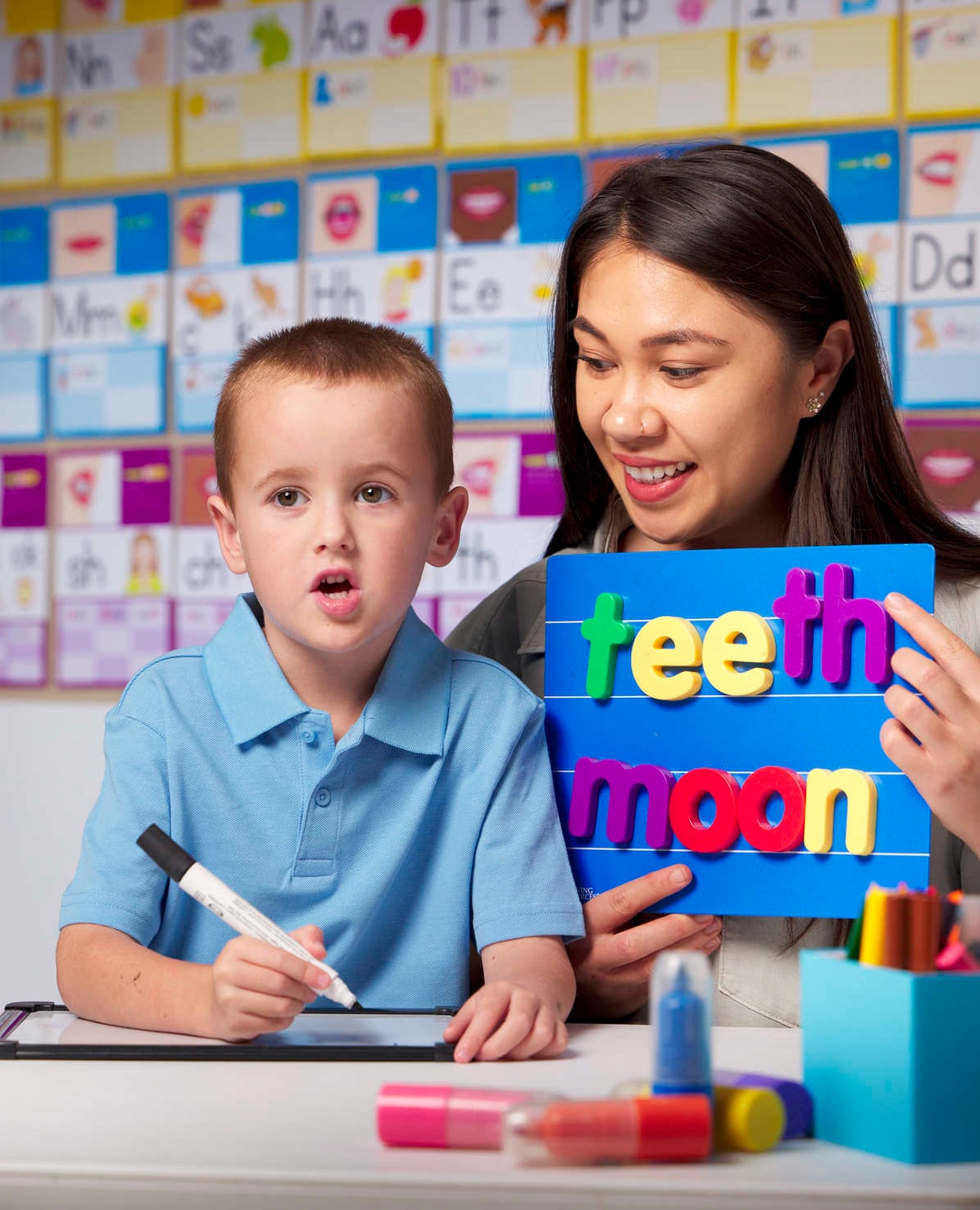
The ability to read and spell accurately and be fluent is dependent on phoneme-grapheme relationships.
Structured phonics need to be taught systematically, sequentially, cumulatively and on a daily basis so it becomes the norm.
Developing early literacy assessment and teaching well-designed programs that have a clearly designed scope and sequence will help to develop knowledge from basic to advanced code.
Learning how to address a language and literacy plan will include frequent checks and understanding, application and review.
Most Structured Synthetic Phonics Programs can be used across all three tiers of instruction and intervention including:
Tier one – High quality instruction for confident students.
Tier two – Small group interventions for students at risk of falling behind.
Tier three – Intensive, early literacy intervention for students falling significantly behind their peers.
Consistent use of the program, particularly early literacy intervention programs, reduces the likelihood of cognitive overload by ensuring that the same instructional language, activities, resourcing and content is used throughout the school and home.
The factors likely to influence the success of a program include;
The amount and quality of training provided for literacy professional development for teachers
The time dedicated to the delivery of content,
The early literacy library resources and ongoing support available to the teachers,
And the fidelity of program delivery.
What are some examples of literacy lesson plans for Teachers?
PLD’s Teaching Sequence Manuals provide early literacy resources outlining what to teach and when to teach it, sequenced over a full year for literacy and oral language.
The manual provides week-by-week guidelines including professional development options and essential PLD programs based on early literacy facts.
Teaching Sequence Manuals:
Student outcomes are always maximised when a school implements a Whole School Literacy Plan.
A Whole School Literacy Plan will focus staff’s knowledge of early literacy concepts into one unified vision.
For the students, as they progress through the school from class to class and from year to year, they will benefit from the continuity of early literacy strategies.
When every teacher in your school follows the same literacy strategy, the school is closer to becoming a literacy leader.
When PLD programs are embedded within a ‘Whole School Literacy Plan’ schools will achieve a level of consistency supporting language and literacy development in the early years across all classes and year levels.
What are some common language and literacy development resources?
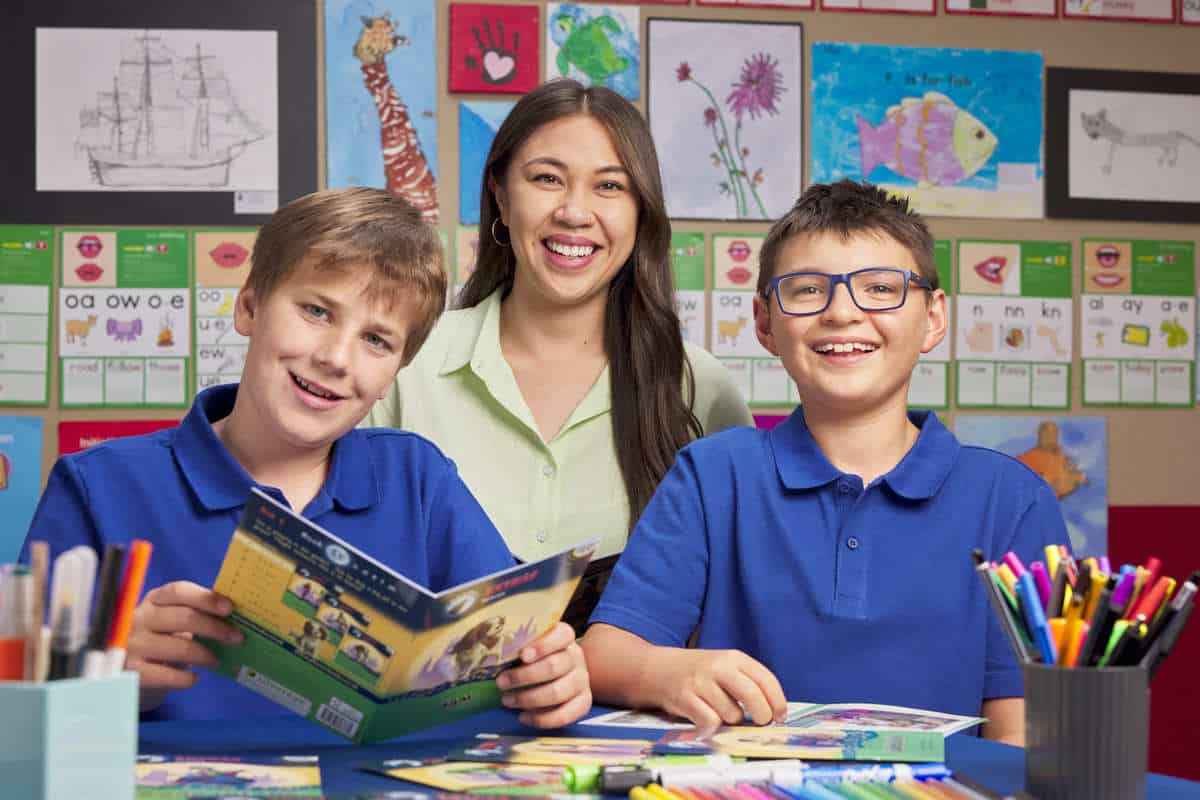
Some common development activities for early literacy learning include:
- Structured Synthetic Phonics Time-Savers
- Connecting Oral Language and Written Language
- Narrative and News Telling
- Learning to Blend Three Phonemes
- Vocabulary and Syllable Time
- Letter Formation for Little People
- Comprehension Questions Series
- Phonic Flashcards
- Phonic Bingo games
- Sound Wall Charts
The daily 5 literacy block is a literacy framework that guides both student and teacher behaviours to create a classroom of engaged and independent readers and writers.
FAQs
What are some of the best books on literacy development?
Some of the best early literacy books include;
Speech To Print. Language essentials for teachers – Louisa Moats.
Reading For Life. High-quality instruction for all – Lyn Stone.
Reading Development And Difficulties – Kate Cain.
Effective Universal Instruction. An action-oriented approach to improving Tier 1.
The Art And Science Of Teaching Primary Reading – Christopher Such.
Wild Things How We Learn To Read And What Can Happen If We Don’t – Sally Rippin.
The Writing Revolution – Judith Hockman and Natalie Wexler.
Reading Reconsidered. A practical Guide To Rigorous Literacy Instruction – Doug Lemov, Colleen Driggs and Erica Woolway.
Uncovering The Logic Of English. A Common Sense Approach To Reading, Spelling And Literacy – Denise Eide.
Robust Comprehension Instruction With Questioning The Author. 15 Years Smarter – Isabel Beck, Margaret McKeown and Cheryl Sandora.
Bringing Life To Words. Robust Vocabulary Instruction – Isabel Beck, Margaret McKeown and Linda Kucan.
How would you describe the relationship between language and literacy development?
Language development involves the development of the skills used to communicate with others through languages, while literacy development involves the ability to read and write.
While the conventional literacy definition is solely focused on reading and writing, it is intrinsically linked to language.
The “Big Six” literacy components (oral language, phonological awareness, phonics, vocabulary, fluency and comprehension), are all strengthened through oral communication.
Some child literacy facts worth taking note of are those who enter school with a strong ability to vocalise, learn to read and write with greater ease.
They are more capable, absorb information easier and tend to do better in school than those with less knowledge of vocabulary and language.
What is language and literacy development?
The two combined create the basis for a Systematic Synthetic Phonics Program. Any good early literacy curriculum should develop both.
Who does PLD assist with literacy development resources, teachers, parents or both?
PLD-literacy.org works solely with school Teachers, assisting with their professional development through offering resources and training to improve literacy levels of students in classrooms.
PLD provides teachers with resources for them to provide to parents as PLD believes the best literacy outcomes are achieved when teachers and parents work together.
Wrapping Up
Learning to read is a fundamental responsibility of primary schools.
Reading ability affects academic performance in all subjects and is associated with later social, emotional, economic and physical health.
After decades of multidisciplinary research, the scientific community has largely reached consensus on how children learn to read, what is effective instruction, what causes literacy difficulty and how difficulties can be prevented.
Unfortunately, much of this research is not reaching the classroom.
As a result, literacy results are not as strong as they could be.
PLD has always been committed to preventing literacy difficulties and is supportive of this initiative which will highlight the role of explicit, systematic and daily phonics teaching as well as an early intervention process.



 print
print